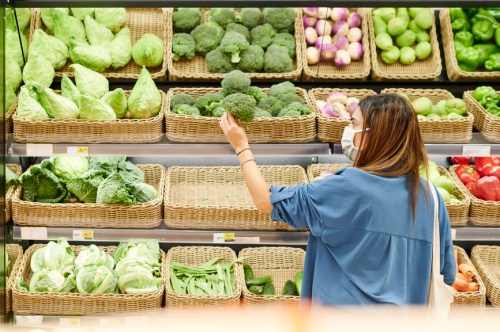The Biden Administration Just Revised the Food Stamp Program To Up Monthly Benefits by Over 25 Percent
Food Stamp benefits increase by over 25 percent permanently thanks to new Biden administration policy—here's what to know.

This week, the Biden administration made history by taking unprecedented steps to end hunger in the United States. On Monday, the USDA announced that all 42 million Americans registered with the U.S. food stamp program, often referred to as the Supplemental Nutrition Assistance Program (or SNAP), will receive an increase in aid larger than ever before. The bump means an extra 25 percent, on average, compared to pre-pandemic levels. While a number of COVID-era changes went into effect as temporary emergency measures throughout 2020 and the early part of this year, these new rule changes will be permanent.
Experts in This Article
Maya Feller, MS, RD, CDN of Brooklyn-based Maya Feller Nutrition is a registered dietitian nutritionist who works with patients looking for nutritional management of diet related chronic illnesses with medical nutrition therapy. She is also adjunct faculty at New York University. Maya is dedicated to promoting nutrition education that helps the public to make informed food choices that support health and longevity.
The new benefits, which will go into effect in October, increase the average monthly allowance of $121 per person to $157 per person, or $36. Previously, SNAP recipients saw a 15 percent pandemic boost to their benefits, which is set to expire at the end of September. This is when the new, higher adjustment will be put into place permanently. The extra funding is expected to not only reduce hunger, but improve nutrition among the food insecure population of the United States.
“An increase in SNAP benefits is a step toward the democratization of food for lower-income families in the U.S.,” says Maya Feller, MS, RD, CDN. “Families will have more dollars to spend on nourishing foods that are supportive of health.” More wholesome ingredients provide, of course, an abundance of vitamins and mineral and support optimal growth and development, which is especially crucial for children, Feller explains. “These foods are most often found in their whole and minimally processed forms and include produce, animal proteins, and plain or fermented dairy.”
In announcing the change, Agriculture Secretary Tom Vilsack also affirmed that the new rules will allow the U.S. to “do a better job of providing healthy food for low-income families.” Critics of the previous cap on monthly benefits rightfully noted that the amount was simply insufficient for many Americans. More than 75 percent of recipients, for example, run out of their benefits in the first half of the month; in order to save funds, beneficiaries often turn to cheaper, less nutrient-dense food options.
Indeed, research has shown that over 50 percent of food stamp program benefits are spent on meat, sweetened beverages, prepared foods, desserts, cheese, salty snacks, candy, and sugar. All of the above are often less expensive than fresh produce, fruits, and vegetables—previously, just under 24 percent of benefits were spent on fruits, vegetables, grains, nuts, beans, seeds, and spices. And given that nearly half of SNAP recipients are children, developing healthy eating habits is crucial.
“More dollars also means more autonomy and flexibility around food choices,” adds Feller. “In areas where families have access to farmer’s markets and CSA-style food boxes that accept SNAP benefits, they have the possibility to utilize dollars for farm-fresh foods.”
In conjunction with the increase in the monthly allowance, the USDA has also revised its Thrifty Food Plan, which provides a low-cost, health-conscious analysis of grocery purchases for a family of four. The plan now includes an extra $34 per week for a family of four, with a total of $193. Of this sum, $47 is allocated toward protein like poultry, nuts, and eggs; $46 toward vegetables (both canned and fresh); $31 toward grains, with a focus on whole grains; $27 on dairy; $27 on fruit; and $14 on other items including candy, coffee, and prepared foods.
The sizable increase in benefits, which will bring the maximum monthly total to $835 for a family of four, will cost an extra $20 billion per year. Congress will not need to approve these changes. During a conference call, Vilsack noted, “Whether you’re a Republican or a Democrat, I think there’s a shared understanding of the importance of this program.”
And while the new rules are not tied immediately to the ongoing pandemic, Vilsack noted that COVID-19 has made the need for programs like SNAP very clear. “A lot of people who thought they’d never take part in the SNAP program found themselves in need,” he said. “The pandemic sort of shocked people out of the belief that this was a program for someone else.”
Oh hi! You look like someone who loves free workouts, discounts for cutting-edge wellness brands, and exclusive Well+Good content. Sign up for Well+, our online community of wellness insiders, and unlock your rewards instantly.
Sign Up for Our Daily Newsletter
Get all the latest in wellness, trends, food, fitness, beauty, and more delivered right to your inbox.
Got it, you've been added to our email list.










